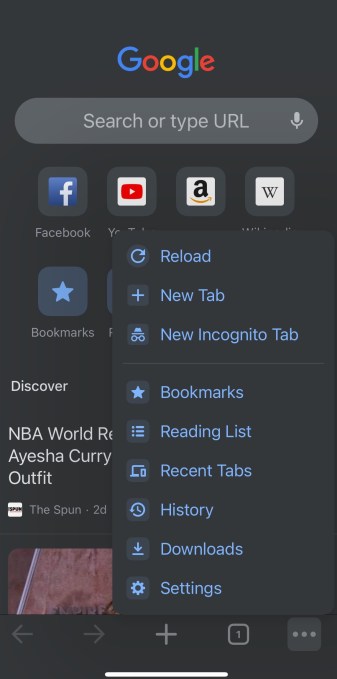As part of a broader update to its Chrome web browser, Google announced today a handful of new features coming to the latest build of Chrome on iOS. Among the key additions, the Chrome app is gaining access to Google’s Enhanced Safe Browsing feature that proactively warns you about dangerous web pages. Other updates include user interface changes, the ability to set Google’s password manager as the autofill provider, an updated language identification model and more.
Some of these changes have been available on Android and desktop versions of Chrome for months or even years but are now making their way to iOS.
For example, Enhanced Safe Browsing, which has been available on Android and desktop versions of Chrome, is finally coming to iPhones and iPads in this release. This feature is able to predict and warn users of dangerous websites by sending real-time data to Google Safe Browsing to be checked for things like malware, phishing and other threats. Chrome will also send alerts to iOS users about compromised credentials so they can change their usernames and passwords accordingly.
Once the app is updated, users can enable Enhanced Safe Browsing on their iPhone or iPad via Chrome > More > Settings > Enhanced Safe Browsing.
Another feature coming to iOS is something called “Chrome Actions,” which helps you more easily perform certain tasks without having to dig around in the app’s settings. For example, you can type actions into the browser’s address bar like “Clear Browsing Data,” “Open Incognito Tab” or “Set Chrome as Default Browser.” The app will then immediately direct you to the correct page. The Chrome address bar can also predict when a user may benefit from a Chrome Action based on the words being typed so you don’t have to know the correct command. This has been available on desktop since 2020 and on Android since April 2022.
The update will also allow users to set Google Password Manager as their Autofill provider, competing with other password utilities like 1Password or Dashlane, as well as offering an alternative to the built-in password management system. If enabled, Chrome can help users manage and fill in their passwords on any website or in any mobile app across their iOS device. The feature was already available on Chrome on the desktop and Android before now.
In terms of the browser’s interface, Chrome’s main screen has been redesigned to now include more than just your recent tabs. You’ll notice the app will now offer access to the same Discover feed of personalized content that’s typically found on the Google mobile app’s homepage. This will come to Chrome on Android in the future, Google notes.
Google is also improving Chrome’s website translation feature, which utilizes on-device machine learning to make websites available in your preferred language. An updated language identification model will be launched on iOS that accurately figures out the language of the page you’re visiting and whether it needs to be translated or not.
Finally, additional minor changes have been identified based on the App Store release notes for Chrome 103. This includes the new ability to manage camera and microphone permissions for specific sites using the camera and microphone icons in the address bar, as well as the ability to download and add iCalendar files to your Calendar and remove duplicate New Tab Page tabs in the background. Some noticed Chrome’s three-dot (overflow) menu got a few tweaks as well, to better highlight the Bookmarks tab and Reading List, which are now higher up in the list.


